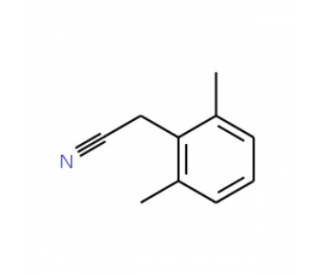詳細(xì)說明
Purity
>90%, by SDS-PAGE visualized with Silver Staining and quantitative densitometry by Coomassie? Blue Staining.
Endotoxin Level
<1.0 EU per 1 μg of the protein by the LAL method.
Activity
Measured by its ability to hydrolyze UDP-Glucose. The specific activity is >15 pmol/min/μg, as measured under the described conditions. See Activity Assay Protocol on .
Source
E. coli-derived
msyB
(Thr2-Arg124)
Accession # P25738GSENLYFQGH C. difficile TcdA
(Met1-Leu542, Arg184Asn)
Accession # P16154HHHHHH N-terminus C-terminus N-terminal Sequence
AnalysisThr2 (msyB)
Predicted Molecular Mass
79 kDa
SDS-PAGE
78 kDa, reducing conditions
8619-GT |
| |
Formulation Supplied as a 0.2 μm filtered solution in Tris, NaCl and Glycerol. | ||
Shipping The product is shipped with polar packs. Upon receipt, store it immediately at the temperature recommended below. | ||
Stability & Storage: Use a manual defrost freezer and avoid repeated freeze-thaw cycles.
|
Assay Procedure
Materials
Glycosyltransferase Activity Kit (Catalog # )
Assay Buffer: 25 mM Tris, 150 mM NaCl, 10 mM MnCl2, 5 mM CaCl2, 150 mM K2SO4, pH 7.0
Recombinant C. difficile Toxin A/TcdA (rC.d.TcdA) (Catalog # 8619-GT)
UDP-Glucose (Calbiochem, Catalog # 670120), 10 mM stock in 25% Ethanol
96-well Clear Plate (Catalog # )
Plate Reader (Model: SpectraMax Plus by Molecular Devices) or equivalent
Dilute 1 mM Phosphate Standard provided by the Glycosyltransferase Kit by adding 40 μL of the 1 mM Phosphate Standard to 360 μL of Assay Buffer for a 100 μM stock.
Prepare the standard curve by performing seven one-half serial dilutions of the 100 μM Phosphate stock using Assay Buffer. The standard curve has a range of 0.039 to 2.5 nmol per well.
Prepare reaction mixture containing 0.8 mM UDP-Glucose and 8 μg/mL Coupling Phosphatase 1 in Assay Buffer.
Dilute rC.d.TcdA to 40 ng/μL in Assay Buffer.
Load 50 μL of each dilution of the standard curve into a plate. Include a curve blank containing 50 μL of Assay Buffer.
Load 25 μL of 40 ng/μL rC.d.TcdA into empty wells of the same plate as the curve. Include a Control containing 25 μL of Assay Buffer.
Add 25 μL of the reaction mixture to all wells, excluding the standard curve.
Seal plate and incubate at room temperature for 40 minutes.
Add 30 μL of the Malachite Green Reagent A to all wells. Mix briefly.
Add 100 μL of deionized water to all wells. Mix briefly.
Add 30 μL of the Malachite Green Reagent B to all wells. Mix and incubate sealed plate for 20 minutes at room temperature.
Read plate at 620 nm (absorbance) in endpoint mode.
Calculate specific activity:
Specific Activity (pmol/min/μg) = | Phosphate released* (nmol) x (1000 pmol/nmol) |
| Incubation time (min) x amount of enzyme (μg) |
*Derived from the phosphate standard curve using linear or 4-parameter fitting and adjusted for Control
Per Reaction:
rC.d.TcdA: 1 μg
Coupling Phosphatase 1: 0.2 μg
UDP-Glucose: 0.4 mM
Background: Toxin A/TcdA
Clostridium difficile is the leading cause of hospital-acquired diarrhea, known as C. difficile-associated disease (1, 2). The major virulence factors produced by C. difficile are two toxins, TcdA and TcdB. Both toxins can monoglucosylate and inactivate Rho family small GTPases within target cells, leading to disruption of vital signaling pathways in the cell, subsequently causing diarrhea, inflammation, and damage of colonic mucosa (3 4, 5). Both toxins have a similar tripartite structure comprised of an N-terminal glucosyltransferase domain, a C-terminal receptor binding domain, and a small hydrophobic span possibly involved in toxin translocation (6). This recombinant TcdA only contains the enzymatic domain. Both TcdA and TcdB also have potassium-dependent UDP-Glc hydrolase activity, which is essentially glucosyltransferase activity with water as the acceptor molecule (7). Under same conditions, UDP-glucose hydrolysis by TcdB occurs at a rate about
5-fold greater than that of TcdA.
References:
Wilkins, T.D. and Lyerly, D.M. (2003) J. Clin. Microbiol 41:53.
Kyne, L. et al. (2002) Clin. Infect. Dis. 34:346.
Voth, D.E. and Ballard, J.D. (2005) Clin. Microbiol. Rev. 18:247.
Chaves-Olarte, E. et al. (1996) J. Biol. Chem. 271:6925.
Just I, et al. (1995) J. Biol. Chem. 270:13932.
Hammond, G.A. and Johnson, J.L. (1995) Microb. Pathog. 19:203.
Ciesla, W.P. Jr. and Bobak, D.A. (1998) J. Biol. Chem. 273:16021.
Entrez Gene IDs:
8470358 (C. difficile)
Alternate Names:
TcdA; ToxA; Toxin A











 粵公網(wǎng)安備44196802000105號
粵公網(wǎng)安備44196802000105號